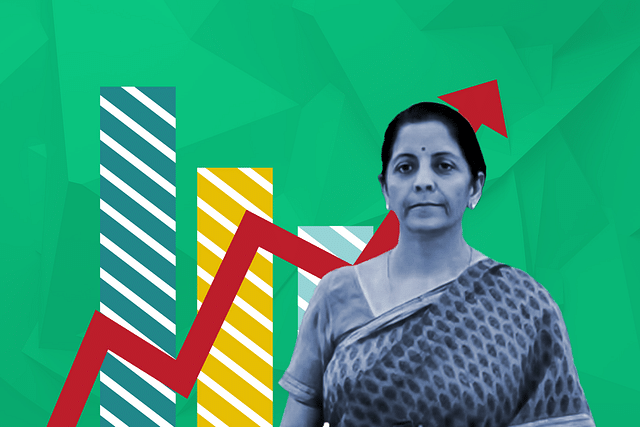
CSO Growth Data: The Pace Of Recovery May Be Slow But Economy Is Headed In The Right Direction
Government expenditure played a major role in ensuring a decent growth rate, and continuing to keep up its spending commitments for the current fiscal year is important.
The Central Statistics Office (CSO) released first advanced estimates of growth for financial year (FY) 2019-20 and it states that the Indian economy is all set to grow at 5 per cent in the current financial year.
The latest forecast indicates that the second half (H2) growth for the current financial year would be at 5.25 per cent. This comes after the gross domestic product (GDP) growth for the first quarter was at 5 per cent and for the second quarter was at 4.5 per cent.
Therefore, clearly growth in second half will be higher than the first half which reaffirms the original forecast shared during the first quarter on how economic recovery would begin from the third quarter onwards.
However, it is important to disaggregate to see the factors that are likely to drive growth.
We know that public administration, defence and other services grew at 9.1 per cent, financial, real estate and professional services grew by 6.4 per cent while electricity and other utility services grew by 5.4 per cent.
It becomes evident from the above that government expenditure played a major role in ensuring a decent growth rate.
Keeping this in mind, one must caution that as per recent reports, government slashing its expenditure by Rs 2 trillion is not the best decision. The exceedingly hawkish fiscal policy will only delay the process of economic recovery and make it far more painful than it needs to be.
No, we are not asking the government to be fiscally extravagant, but we are simply saying to keep up with its expenditure commitments even if fiscal deficit increases for the current fiscal year.
As is the case, a lower than anticipated growth rate challenges the fiscal math and a 3.3 per cent of deficit will only spook investors. There should not be any reluctance to use whatever fiscal space we have to revive growth — especially if the monetary bosses are reluctant to use monetary policy.
I have heard many arguments reminding me of limitations of monetary policy — some even focusing on the law of unintended consequences.
However, our real rates are so high that we do have adequate space to have an effective monetary policy response to the current slowdown.
Let this be reflected on record, as per my analysis, we have not had such a response from the Monetary Policy Committee (MPC) or the Reserve Bank of India (RBI) till date.
The three rounds of ‘Operation Twist’ have not really created much impact on government securities (GSec) yields and while part of the problem goes back to uncertainty around the fiscal deficit, a part of it also goes down to the lack of frontloading of interest rate cuts combined with the slow pace of the same.
Is it time we consider massive bond purchases to reduce GSec yields? Perhaps yes, because if not now, then when?
Reducing government’s cost of borrowing is critical as a bulk of our fiscal deficit is just interest payments and the gap between primary and fiscal deficit has widened. Therefore, driving down these rates can create additional fiscal space for government.
Back in July, very few of us had cautioned against such a sharp slowdown. The Q2 figures were indeed a surprise for many of us. Now it is official that our output gap has widened, and therefore, we need to undertake monetary policy to move back to our potential growth rate.
We would also need a fiscal response which has to be adequate to address some of the key bottlenecks faced by the non-banking financial companies (NBFCs) and banks.
The only good thing over the last couple of quarters has been the end of a debate that questioned India’s GDP figures. Now everyone believes these figures because it shows precisely what they wanted to see. The sole exception to this is those who committed to the idea that our figures can be overstated.
The first advanced estimate is, however, in my opinion slightly lower than what my forecast suggests. As per my model, FY2019-20 growth would be between 5.1-5.3 per cent which suggests that H2 growth would be higher than 5.25 per cent as projected by MOSPI.
However, the difference is not that significant, and not one of much consequence.
But, the important point here is that one can expect things to look better going into a fresh financial year.
Economic recovery is indeed taking place, but the pace has been slow due to our reluctance to use monetary policy as an effective tool.
One hopes that the upcoming budget utilises the fiscal gears as much as possible to accelerate the process of recovery.
A higher deficit for the current and next fiscal year should not be a cause for concern given a credible medium-term fiscal consolidation path. Hopefully, the budget recognises it and takes a similar view on the same.